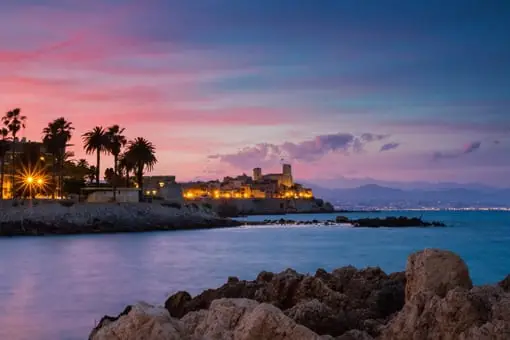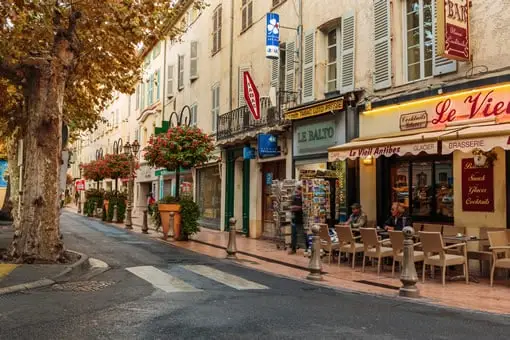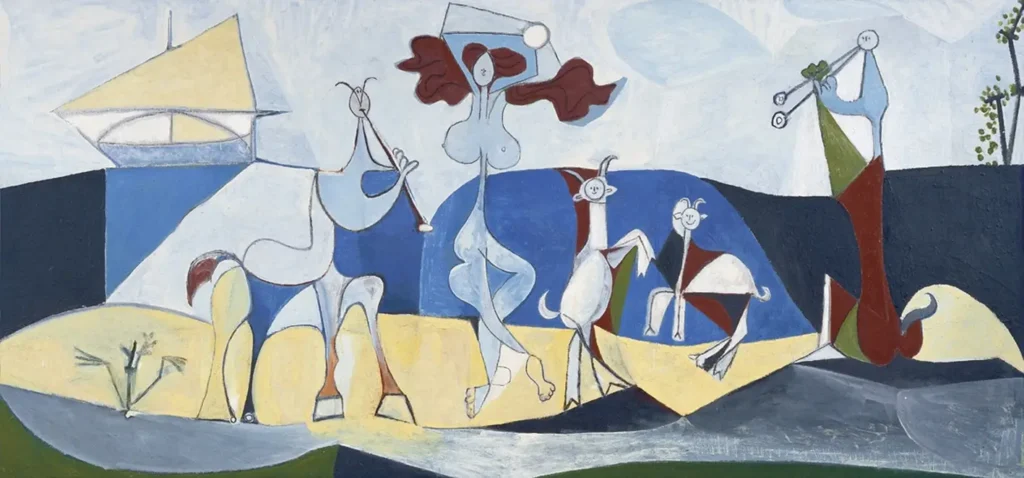Enchanting Antibes Juan-les-Pins History
A short history of the city of Antibes Juan-les-Pins
The history of Antibes Juan-les-Pins goes back several millennia. The site was first settled by the Ligurians in the 5th century b.c. The city occupies a remarkable location: on one hand, a defensive site with a natural shelter; on the other, the convergence point for sailing itineraries along the coasts of Italy and Corsica.

With the arrival of Christianity in the 3rd century AD, the city became a bishopric or diocese of the Catholic church. But the town, now named Antiboul, would soon experience difficult times, as Visigoths, Saracens, and hordes of Barbarians spread terror throughout the region for centuries. The insecurity reigning in the city incited the Pope to transfer the bishopric to Grasse in 1244 and, in 1385, the Grimaldi family were appointed Royal Captains of Antibes by Queen Marie.
The year 1482 was an important crossroads in the city’s history: Provence became part of the Kingdom of France with Antibes on the border. In the 17th century, French King Louis XIV entrusted Field Marshal Sébastien Le Prestre de Vauban with modernizing the fortifications in Antibes which completely reshaped the city. These works were performed by the French military engineer Niquet.
In the winter of 1747, the town withstood a siege by Austrian and Sardinian troops and the English fleet for 58 days. In 1815, it closed its doors to Napoleon on his return from the Isle of Elba and was rewarded for its loyalty to King Louis XVIII, who restored its title of ‘Bonne Ville’, which had been withdrawn by the Emperor. The town also earned a new coat of arms, with the fleurs-de-lis included.

In 1887 the appearance of the word ‘Côte d’Azur’ was a turning point for the entire Riviera and thus for Antibes and the very young district of Juan-les-Pins. 1889 marked the opening of Grand Hôtel du Cap which began the transformation of the region into a major tourist resort. Little by little villas were being built and Juan-les-Pins grew into a splendid seaside resort town between the larger cities of Nice and Cannes. Antibes began to feel the need to burst out of its ramparts and undertook to demolish them all in 1895. The regions traditional works of producing olive oil, wine and silkworm farming gradually yielded to horticulture and tourism.
When World War II ended, Antibes Juan-les-Pins enjoyed a rebirth of sorts; tourists flocked here and famous names settled in the city, such as Nikos Kazantzakis, author of Zorba the Greek and The Last Temptation of Christ, and Pablo Picasso who painted in Château Grimaldi.

in 1960, Juan-les-Pins hosted the first European Jazz Festival. The festival is still one of the world’s most renowned yearly music events.
In 1970, the sea was in the spotlight with the opening of Marineland, Europe’s largest marine park and research center. In the following decade, many international sporting events took place (gymnastics, skeet shooting), and major companies settled in the industrial zone of Les Trois Moulins.
Today, Antibes Juan-les-Pins is still a top tourist destination in the Cote d’Azur with its historic hotels and legendary jazz culture. Antibes should be on any tourists top-ten list when visiting France.
More pictures available on our Pinterest Antibes Juan-les-Pins page.
Contact us to create a custom trip to Provence from Paris.